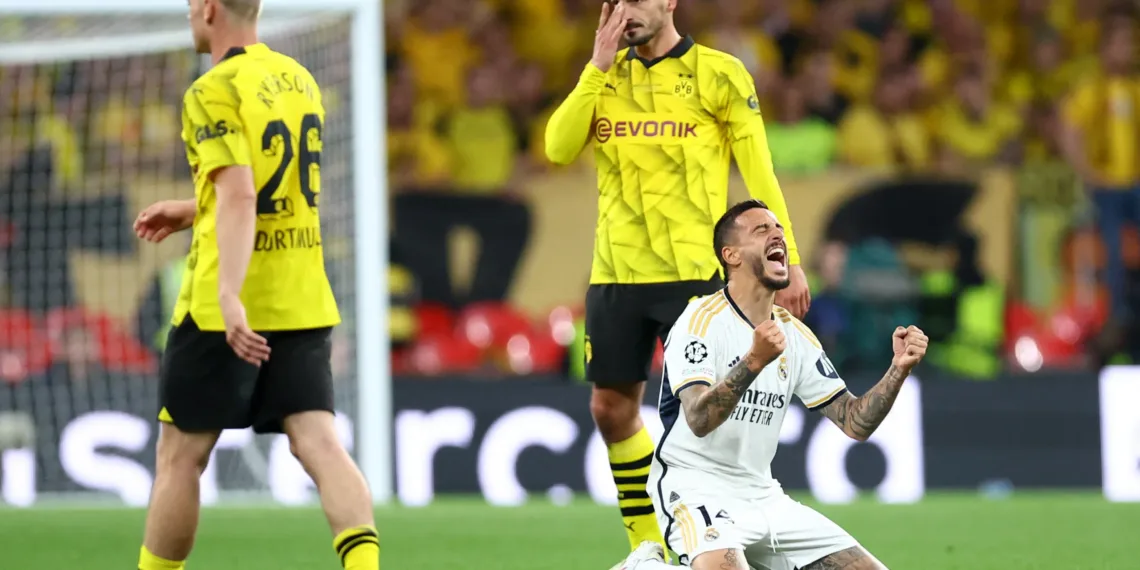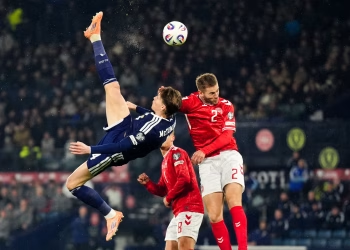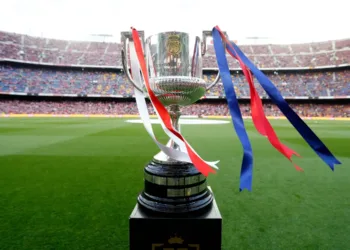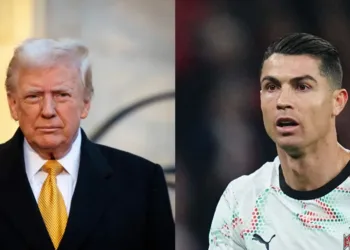Real Madrid claimed their 15th European Cup at a lively Wembley on Saturday, delivering a late surge to secure a 2-0 victory over Borussia Dortmund, who had dominated the first hour and threatened an upset.

This victory marked Real’s sixth trophy in 11 seasons and their 11th consecutive triumph in a European final, with their last defeat occurring 41 years ago against Aberdeen in the Cup Winners’ Cup. They have now won Europe’s most prestigious club competition more than twice as often as the next best team. It also extended Carlo Ancelotti’s record to five successes as a coach, adding to the two trophies he won as a player with AC Milan.
On Saturday, Real Madrid faced Borussia Dortmund at Wembley in the Champions League final. Despite many considering Madrid the favorites, the match proved to be a challenging contest, ultimately ending in a victory for Madrid.
Read More: Hansi Flick To Barcelona: Football Ideology, Playing Style, An In-depth Tactical Analysis
Real Madrid vs Dortmund: Champions League Final 2023-24 Tactical Analysis
Tactical Flexibility: Real Madrid’s Key to Victory
Real Madrid’s triumph in the Champions League final against Borussia Dortmund showcased their tactical flexibility as a decisive factor in securing their 15th European Cup. Despite facing early challenges, Madrid’s adaptability and versatility proved crucial in overcoming Dortmund’s threats and claiming victory.
High Pressing and Defensive Organization
From the outset, Madrid implemented a high pressing strategy, aiming to disrupt Dortmund’s build-up play and force turnovers in dangerous areas. Deploying a 4-4-2 formation, Madrid utilized Vinicius Junior and Rodrygo to press Dortmund’s center-backs aggressively, aiming to force the ball wide and isolate the opposition’s full-backs.
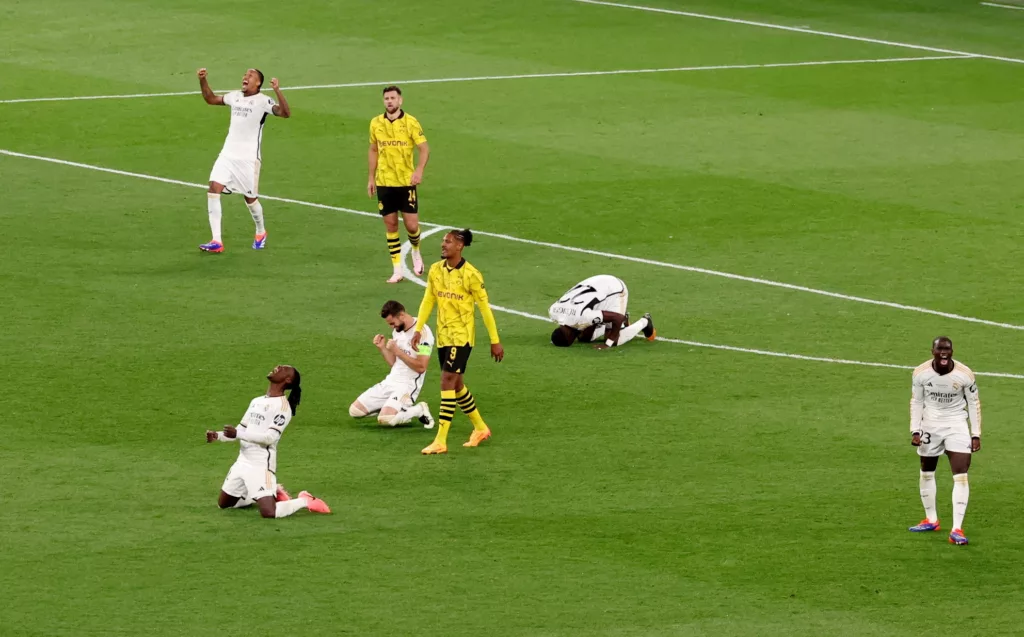
Central to Madrid’s defensive approach was the concept of trapping their opponents into predictable passing lanes. By closing down passing options and funneling play towards specific players, such as Maatsen, Madrid aimed to regain possession quickly and launch counter-attacks.
Carlo Ancelotti’s tactical acumen was evident in his adjustments to counter Dortmund’s tactical setup. Recognizing Dortmund’s numerical advantage in midfield with their 4-3-3 formation, Ancelotti instructed his players to adapt accordingly, ensuring parity in midfield battles.
Midfield Rotation and Fluidity
Madrid’s midfield rotation and fluidity were instrumental in breaking down Dortmund’s organized defensive structure. Despite initial difficulties in creating meaningful attacks, Madrid’s players showcased their positional versatility, seamlessly interchanging positions to exploit gaps in Dortmund’s defense.
Toni Kroos’s positional switch to the left center-back role was a tactical masterstroke, drawing Dortmund’s midfielders out of position and creating space for Madrid’s attacking players to exploit. With Casemiro and Eduardo Camavinga providing defensive stability, Madrid’s midfield trio effectively controlled the tempo of the game and dictated play.
Wide Exploitation and Defensive Adaptation
As the game progressed, Madrid demonstrated their tactical intelligence by adapting to Dortmund’s defensive approach. With Dortmund adopting a deep defensive block and prioritizing central compactness, Madrid capitalized on the wide areas to stretch their opponent’s defense and create scoring opportunities.
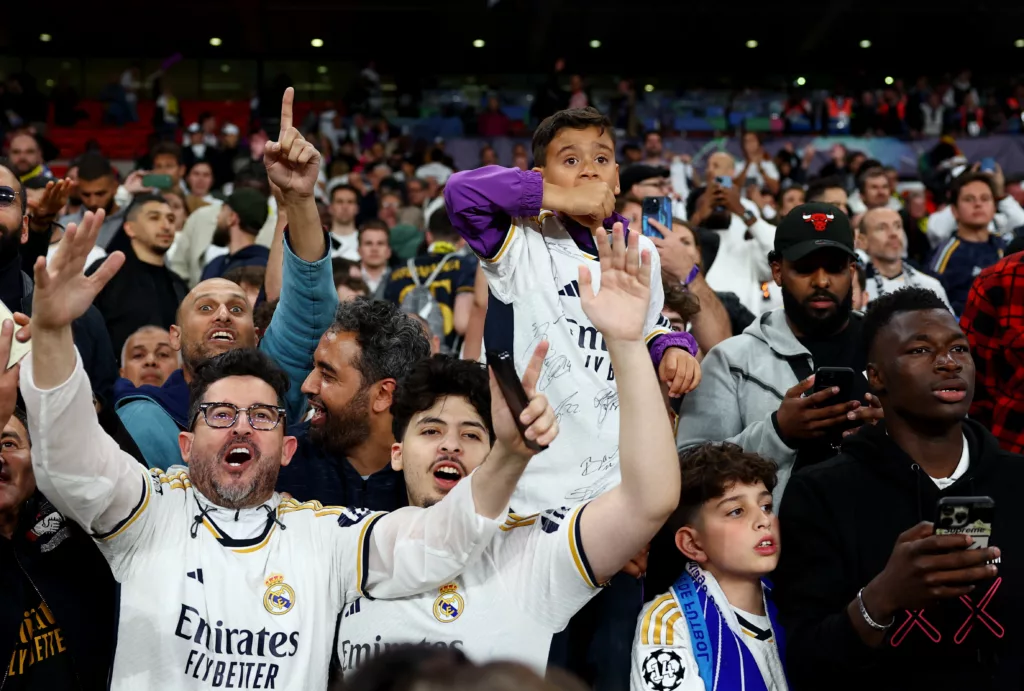
Vinicius Junior and Rodrygo’s isolation against Dortmund’s full-backs highlighted Madrid’s prowess in one-on-one situations, exploiting the space out wide and delivering dangerous crosses into the box. Dani Carvajal’s positional flexibility further contributed to Madrid’s attacking threat, as his inward movements created overloads in midfield and provided additional passing options.
Furthermore, Madrid’s defensive adaptation was evident in their transition from a high pressing game to a more controlled defensive approach. By dropping deeper and maintaining defensive compactness, Madrid nullified Dortmund’s counter-attacking threats and limited their opponent’s chances on goal.
Real Madrid’s tactical triumph in the Champions League final exemplified the importance of flexibility, adaptability, and tactical intelligence in modern football. From high pressing and defensive organization to midfield rotation and wide exploitation, Madrid’s strategic adjustments played a pivotal role in securing victory against a formidable opponent. As football continues to evolve, Madrid’s tactical masterclass serves as a testament to the significance of tactical flexibility in achieving success at the highest level.
Real Madrid’s Clinical Triumph and Dortmund’s Missed Opportunities
Real Madrid’s victory in the Champions League final at Wembley showcased their clinical finishing and unwavering belief as they secured their 15th European Cup. Post-match interviews echoed sentiments of “clinical”, “ice-cold”, and “belief”, capturing Madrid’s ability to seize crucial moments in the game.
After a challenging first half, Real Madrid emerged from the break with renewed determination and belief in their ability to turn the tide. As Dani Carvajal aptly summarized, despite their lackluster performance in the first half, they remained resilient and poised for their moment to shine, ultimately delivering a LaLiga-Champions League double.
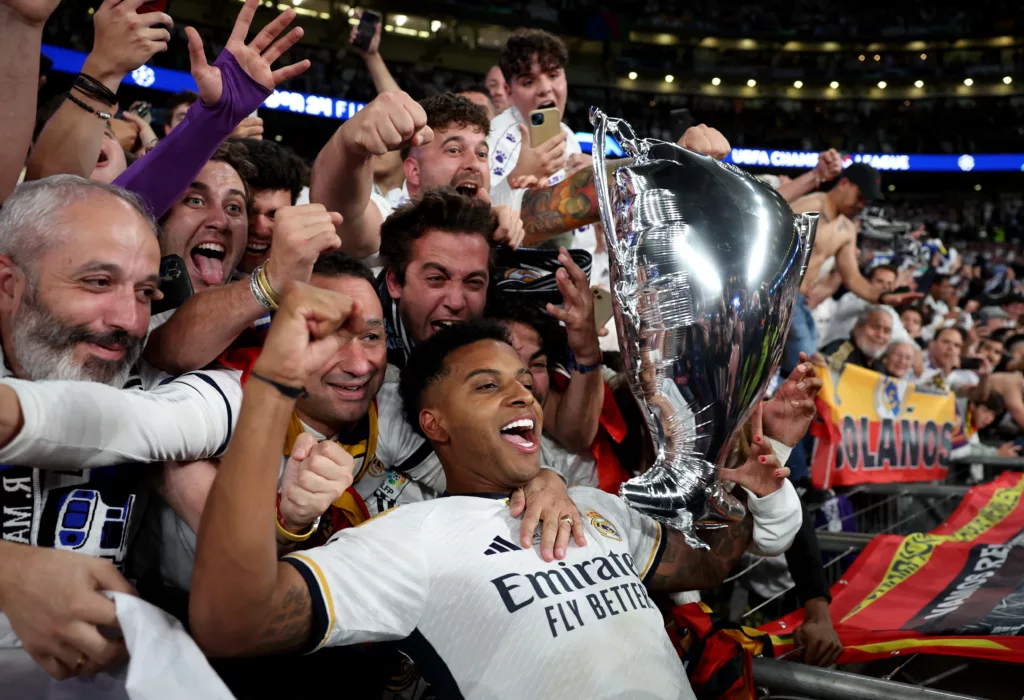
In contrast, Borussia Dortmund, buoyed by their impressive semi-final victory over Paris St Germain, enjoyed a dream first half characterized by confidence and aggression. However, their failure to convert numerous opportunities into goals proved costly, as Madrid capitalized on defensive lapses to secure victory.
Despite Dortmund’s valiant effort and commendable performance, coach Edin Terzic acknowledged Madrid’s superior finishing and “killer instinct”. Dortmund’s fans continued to support their team fervently, but the missed opportunities and defensive lapses ultimately cost them the chance to lift the trophy. Terzic’s assessment reflected the sentiments of many, recognizing Madrid’s deserved victory while lamenting Dortmund’s missed opportunities.

